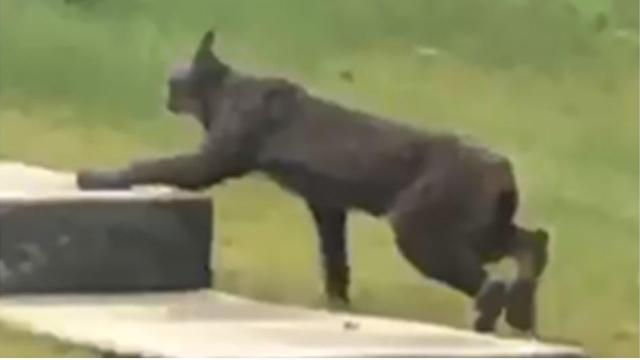A researcher in Canada has reported a discovery aptly timed for spooky season: a black-coated Canada lynx (Lynx canadensis). This appears to be the first recorded sighting of a lynx with this particular colouring.
The encounter with the black lynx actually happened in August 2020, when Thomas Jung, a wildlife biologist and professor at the University of Alberta, spotted the unusual cat in a rural area near the town of Whitehorse, Yukon. He managed to get a 30-second video of it on his mobile phone from about 50 meters away. The lynx seemed to be relatively at ease in the presence of several people and a dog, but eventually left — perhaps because of the dog’s barking. Jung, also a government employee for the territory of Yukon, said that he then reached out to several lynx experts, who all agreed that he had seen the real deal.
Jung’s findings, including the images captured on video, were published this month in the journal Mammalia. The video can be viewed on YouTube.
Domestic cats are known for a wide array of coat colours, but the same isn’t true for cats in the lynx family. Canada lynx usually have a silver or grayish coat in the winter, which can change to a reddish brown coat dotted by black spots during the summer. So the black look for this lynx, also known as melanism, is so rare that this is apparently the first instance documented in this species. This grainy quality of the video sadly doesn’t allow for a very detailed exploration of the lynx’s unique coat, but the cat did appear to have some whitish grey hairs along its outer coat and facial ruff.

It’s also not clear whether its colouring is an advantage or disadvantage to its survival, though Jung speculates that it’s likely the latter. That’s because Canada lynx typically hunt snowshoe hares. These hares do like to frequent burned-down forests, where the cat’s black coat might not stick out during the warmer months of the year. “However, dark-coloured Canada lynx are likely far less camouflaged to snowshoe hare during winter when the ground is covered with deep snow,” Jung wrote. “Hence, melanistic individuals would be at a distinct disadvantage when hunting hares during winter.”
Though their numbers are stable in the Northern parts of Canada and Alaska, Canada lynx populations are disappearing elsewhere in the U.S. and southern Canada. Human encroachment and the effects of climate change, such as more frequent and fiercer wildfires, are expected to further threaten the species.
